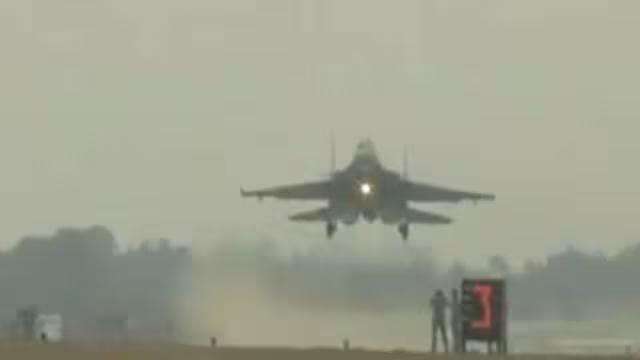
Why is IAF conducting fighter jets’ landing & take-off drill at Ganga Expressway in UP?
In a significant development, the Indian Air Force (IAF) recently conducted a landing and take-off drill of fighter jets on the Ganga Expressway in Uttar Pradesh (UP). The exercise, which included the Rafale fighter jets, aimed to assess the expressway’s potential as an alternative runway during times of war or national emergencies. This is the first airstrip on any expressway in India equipped to handle both day and night landings of jets. In this blog post, we will delve into the reasons behind this exercise and its significance for the country’s national security.
The Ganga Expressway, a 594-kilometer-long highway, connects the state capital Lucknow to the industrial city of Prayagraj. The expressway is already a significant infrastructure project in the country, but the IAF’s decision to use it as a potential airstrip has raised questions about its capabilities and significance.
According to reports, the IAF conducted take-off and landing exercises on the Ganga Expressway at both day and night. The exercise was designed to test the expressway’s capabilities to handle fighter jets, including the Rafale, which is one of the most advanced fighter jets in the world. The IAF used various aircraft, including the Su-30MKI and the Mirage 2000, to test the expressway’s suitability for landing and take-off operations.
So, why is the IAF conducting such exercises on the Ganga Expressway? The answer lies in the country’s rapidly changing security landscape. With tensions escalating on the border with China and Pakistan, the IAF is looking for alternative runways that can be used in case of an emergency or war. The Ganga Expressway, being a strategically located highway, offers a unique opportunity for the IAF to establish an alternative airstrip that can be used to transport troops, equipment, and supplies.
The exercise is also significant because it demonstrates the IAF’s ability to adapt to changing circumstances. The Ganga Expressway is not a traditional airstrip, and the IAF’s decision to use it as a potential runway is a testament to its flexibility and ability to think outside the box. The exercise also shows that the IAF is willing to explore unconventional solutions to meet the country’s security challenges.
Another significant aspect of this exercise is its potential to boost the country’s national security. The Ganga Expressway is a critical infrastructure project that connects the eastern and western parts of the country. By using it as an airstrip, the IAF can quickly move troops and equipment to any part of the country, improving its response time and ability to respond to crises.
Furthermore, the exercise is also significant because it demonstrates the country’s ability to respond to emerging security challenges. The Ganga Expressway is not just an infrastructure project, but also a symbol of the country’s ability to adapt to changing circumstances. The exercise shows that the country is willing to invest in its security and is committed to protecting its citizens.
In conclusion, the IAF’s decision to conduct fighter jets’ landing and take-off drill on the Ganga Expressway in UP is a significant development that demonstrates the country’s commitment to national security. The exercise, which included the Rafale fighter jets, aimed to assess the expressway’s potential as an alternative runway during times of war or national emergencies. The Ganga Expressway, being a strategically located highway, offers a unique opportunity for the IAF to establish an alternative airstrip that can be used to transport troops, equipment, and supplies. The exercise is a testament to the IAF’s ability to adapt to changing circumstances and demonstrates the country’s willingness to invest in its security.






